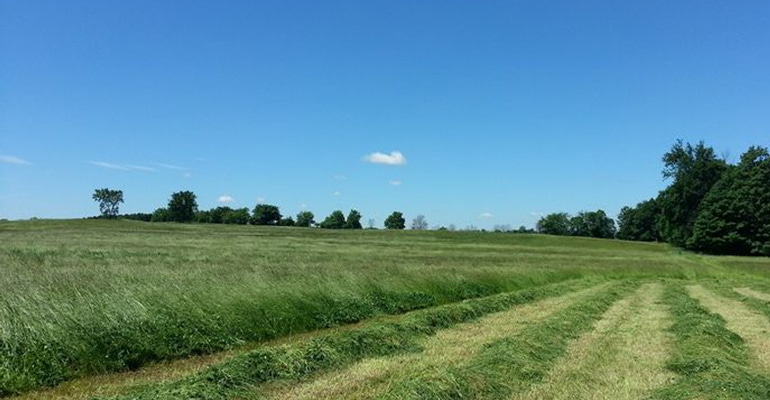December 13, 2019

By Kim Cassida and Phillip Kaatz
When the weather throws us challenges, it is a good time to be growing forages. Established perennial forages can be an island of stability when weather prevents new plantings, and annual forages can provide quick yields in narrow windows of opportunity.
Preserving forages as haylage or baleage greatly reduces drying time in the field, thus reducing the risk of forage being rained on, and grazing avoids drying issues altogether.
However, the sheer number of forage species options can be daunting. Species differ in their preference for site conditions, yield potential and best use as hay, haylage or pasture, and some are not suitable for use in Michigan. Michigan State University Extension announces a new bulletin aimed to help hay growers and livestock producers make informed choices on new forage plantings.
“Recommended Hay and Pasture Forages for Michigan” summarizes information on forage species with proven adaptation to Michigan conditions. Data was compiled from a variety of sources with constant attention to accuracy for Michigan-specific conditions.
The bulletin provides summaries of species characteristics; suitability as hay, haylage or pasture; site and management preferences; and yield potential. Perennial, biennial and annual options are discussed for cool- and warm-season grasses, legumes and forbs.
Other information includes recommended planting times, seeding rates and depth, harvest height, and feeding precautions. The final section discusses considerations when planting mixtures of species for common purposes, including premium (“dairy quality”) hay, horse hay, high-performance pasture for grass-fed operations, horse pastures, and low maintenance hayfields or pastures. Instructions for calculating custom seeding mixtures are included.
“Recommended Hay and Pasture Forages for Michigan” is available for free download. Visit MSU Forage Connection to find other resources supporting hay, haylage and pasture production in Michigan.
For more information about forages and grazing, email Kim Cassida, forage and cover crop specialist, at [email protected]; Phil Kaatz, forage educator, at [email protected];or Kable Thurlow, grazing educator, at [email protected].
Cassida and Kaatz write for Michigan State University Extension.
You May Also Like




